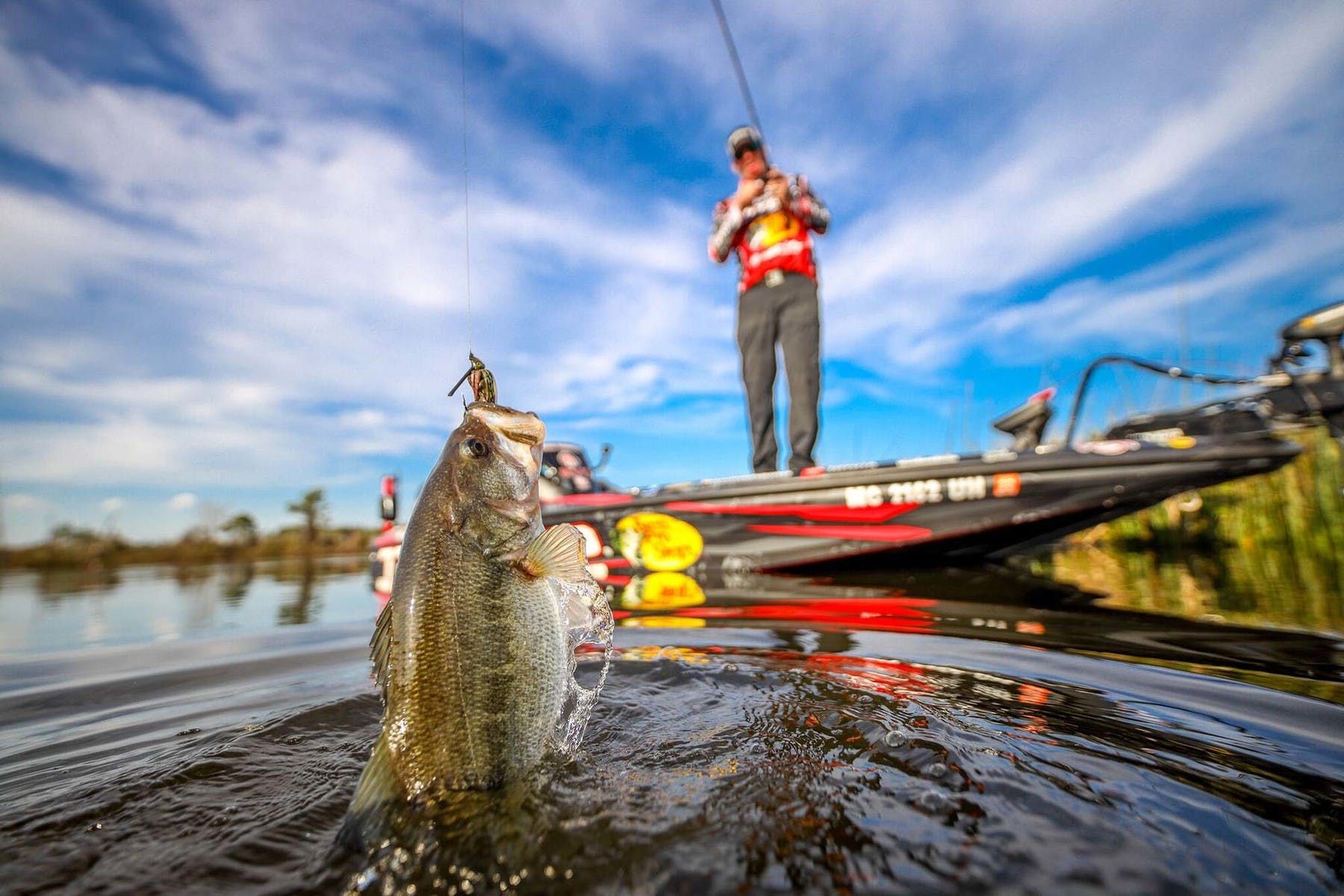Summer Schoolers

Schooling activity can be as vexing as it is thrilling. Stay busy by fishing fixed targets.
It’s one of the most exciting, yet potentially frustrating occurrences in summer bass fishing — schooling activity, in which bass round up baitfish, push them topside and pick them off with ruthless efficiency. For anglers, this presents an ideal opportunity to engage obviously active fish that are not trying to hide from you.
Summer usually sees a daybreak schooling session during the first hour after sunrise, as baitfish are particularly vulnerable in this nocturnal/diurnal transition. Schooling may also happen throughout the day, especially if cloudy skies keep the heat at bay.
Baitfish species may vary by location, but schooling is schooling, except for lakes with blueback herring. These large, nomadic forage fish are fast movers that tend to roam in smaller pods, so schooling bass are usually chasing individual baits or small clusters, rather than seeking to gobble a mouthful of smaller baits like threadfin shad.
Best Baits
Topwater walkers or pencil poppers are deadly on schooling bass, but make sure your baits are fitted with Mustad KVD Triple Grip trebles, which grab and hold on to anything that bites. Schoolers tend to attack with more enthusiasm than precision, so if one misses, keep the bait moving and the fish — or one of his schoolmates — will likely return.
Braided main line gives you better bait response with firm, immediate hook sets; however, braid floats and a topwater bait’s front treble often grabs braided main line tied straight to the lure. Eliminate this annoyance by topping your braid with a short fluorocarbon or monofilament leader.
Long rods and braided line are standard for this deal, as you’ll usually need to reach fish from a distance. Look at it this way, you can make a short cast with a long rod much easier than squeezing a long cast out of a short rod.
Strategic Operations
The problem with chasing schoolers is the uncertainty. Also, when bass are targeting bigger baits like the blueback herring, the commotion you see is often the residual energy from where a bass recently blasted a meal. It’s tempting to toss a bait right at those dissipating rings, but the fish that just ate has likely moved on to the next meal.
Best bet is to keep busy by fishing fixed targets like brush piles, deep docks or channel turns near the areas where you’ve see schooling and keep a couple of topwater baits handy. If schoolers appear within casting range, fire a bait into their midst.
Just pay attention to the risk-reward equation. Spend enough time chasing schoolers and you’ll likely cash in on this aggressive feeding behavior, but you’ll also burn through a lot of fishing time. This consideration is probably more relevant to tournament anglers, whereas chasing schoolers can make for a fun day with kids and novice anglers.
Below the Action
While all that splashing, flipping and white water busting certainly catches our eye and red lines the adrenalin, there’s an often-overlooked element of the schooling game that’s worth a mention. Bigger fish frequently patrol below the fracas, occasionally rising for an easy shot at vulnerable targets, but mostly watching for the easy pickings of wounded baits fluttering through the water column.
Jerkbaits and lipless crankbaits retrofitted with Mustad KVD Triple Grip trebles, along with medium size soft plastic swimbaits on Mustad Grip-Pin Swimbait Hooks will tempt the fish lurking deeper. And don’t hesitate to go all the way downstairs with bottom presentations like a 10-inch ribbontail worm on a Mustad Offset Worm Hook for fish gobbling baits killed in the schooling frenzies.